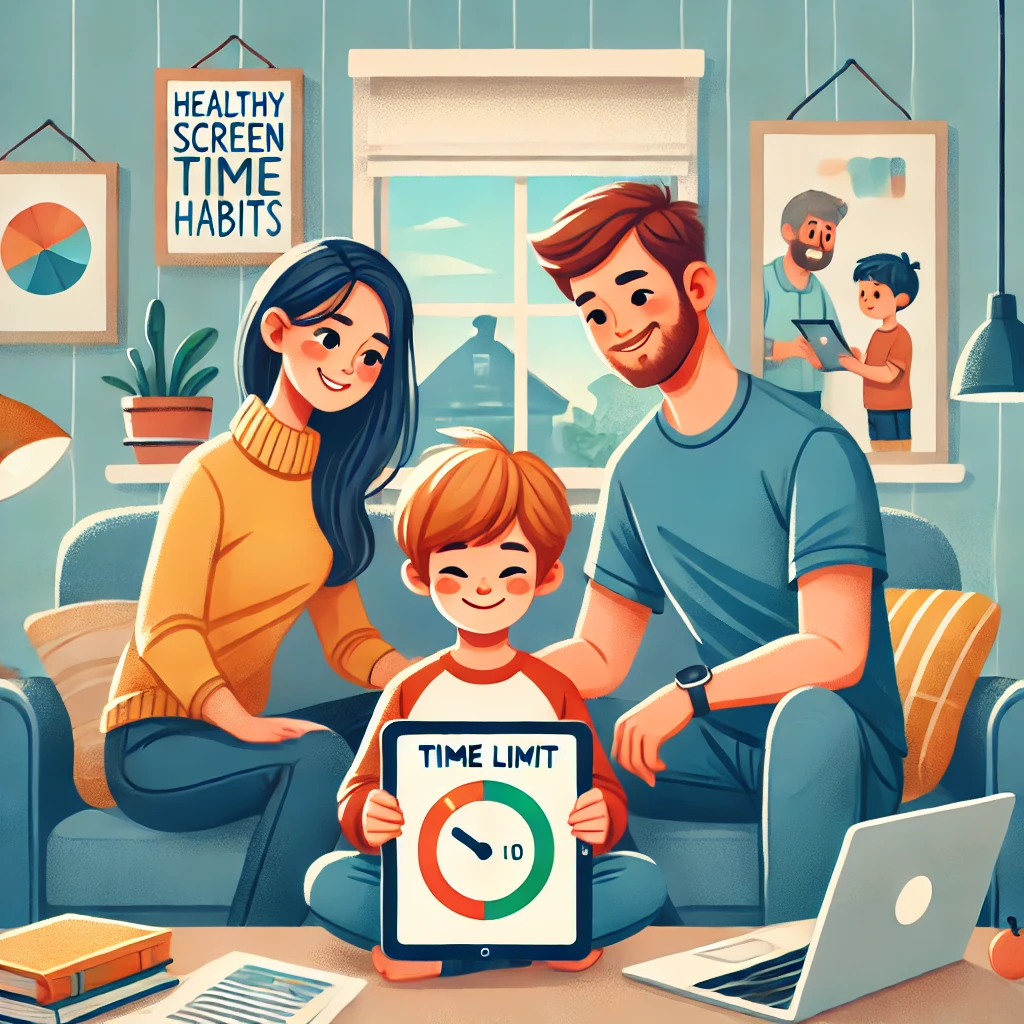In today’s digital world, screens are everywhere—smartphones, tablets, computers, TVs, and even smartwatches. While technology offers incredible learning opportunities for children, excessive screen time can lead to negative effects such as poor sleep, decreased physical activity, and social-emotional challenges. So, how do we find the right balance?
Encouraging healthy screen time habits in children isn’t about banning devices but about fostering a mindful and purposeful relationship with technology. Here’s how parents and caregivers can help kids develop a healthy approach to screen time.
1. Set Clear Boundaries and Time Limits
Unregulated screen use can quickly spiral out of control. The American Academy of Pediatrics (AAP) recommends:
- Under 2 years old: Minimal screen time, except for video calls.
- Ages 2-5: No more than one hour per day of high-quality programming.
- Ages 6 and up: Consistent limits on screen use, ensuring it doesn’t interfere with sleep, schoolwork, or physical activity.
🔹 Tip: Use built-in parental controls or apps that set screen limits on devices. Encourage kids to take breaks, using the 20-20-20 rule (every 20 minutes, look at something 20 feet away for 20 seconds).
2. Prioritize Quality Over Quantity
Not all screen time is created equal. There’s a big difference between mindlessly watching YouTube videos and engaging in interactive educational content.
🌱 Encourage:
✅ Educational apps and games that promote problem-solving and creativity.
✅ Video calls with family and friends for social connection.
✅ Nature and science documentaries that spark curiosity.
🚫 Limit:
❌ Endless scrolling on social media.
❌ Fast-paced, overstimulating cartoons.
❌ Violent or inappropriate content.
3. Be a Role Model
Children learn from watching adults. If they see you constantly glued to your phone, they’ll mirror that behavior.
👨👩👧 Try This:
- Set “screen-free” times, like during meals and before bedtime.
- Put your phone down when engaging with your child.
- Show enthusiasm for offline activities like reading, cooking, or outdoor play.
4. Encourage Screen-Free Activities
Screens should complement life, not replace real-world experiences. Help your child find joy in offline activities.
🎨 Fun Alternatives:
- Outdoor Play: Biking, hiking, or playing sports.
- Arts & Crafts: Drawing, painting, or DIY projects.
- Reading Together: Make reading a fun family habit.
- Board Games & Puzzles: Great for bonding and critical thinking.
5. Establish Tech-Free Zones
Create specific areas in your home where screens are not allowed.
🚫 Tech-Free Zones Can Include:
- Bedrooms (to improve sleep quality).
- The dining table (to encourage conversation).
- The car (to encourage looking out and talking).
🔹 Tip: Invest in a physical alarm clock so kids don’t rely on screens before bed.
6. Teach Digital Literacy & Safety
Children need guidance on how to use screens responsibly, not just when to use them.
💡 Key Lessons:
- The difference between real vs. fake online content.
- The importance of online privacy and not sharing personal details.
- How to recognize and handle cyberbullying.
- Healthy ways to self-regulate screen time.
7. Make Screen Time a Shared Activity
Instead of letting kids consume content passively, make it interactive.
👨👩👧 Ways to Engage Together:
- Play educational games as a family.
- Watch and discuss age-appropriate movies.
- Help them research and learn about topics they love.
By being involved, you can guide their screen experiences and ensure they’re meaningful.
8. Balance, Not Perfection
It’s impossible to eliminate screens entirely, nor should we. The goal is balance—ensuring children engage in a variety of activities and develop a healthy relationship with technology.
Start small: set a few rules, be consistent, and adjust as needed. With time, kids will develop self-regulation skills that will serve them well into adulthood.
Final Thoughts
Technology is here to stay, and it can be a powerful tool when used wisely. By setting boundaries, prioritizing quality content, and modeling good habits, parents can help children enjoy the benefits of screens without letting them take over their lives.





